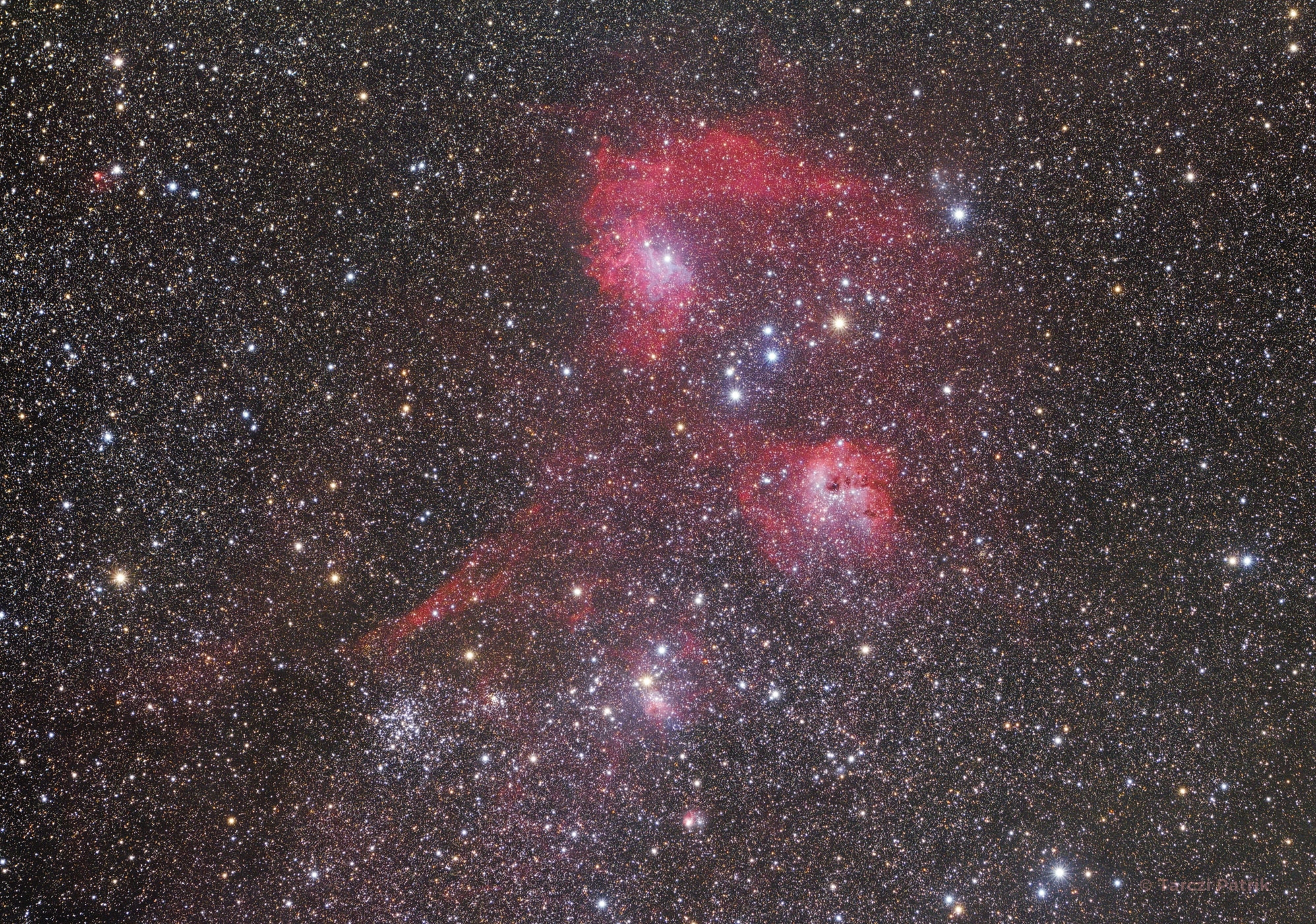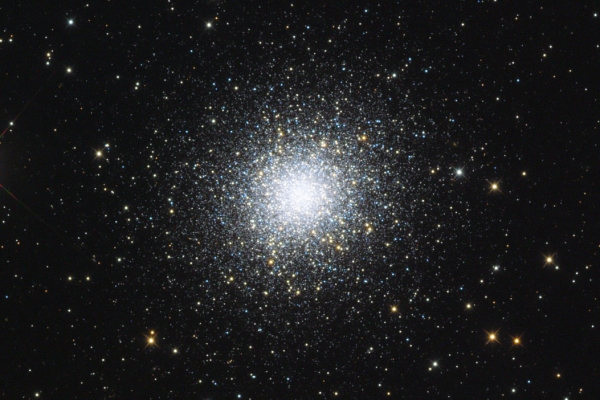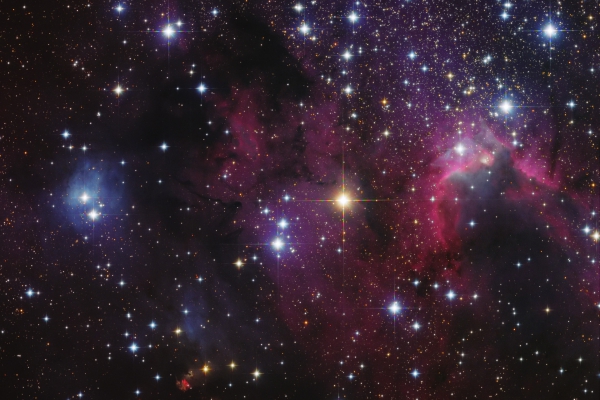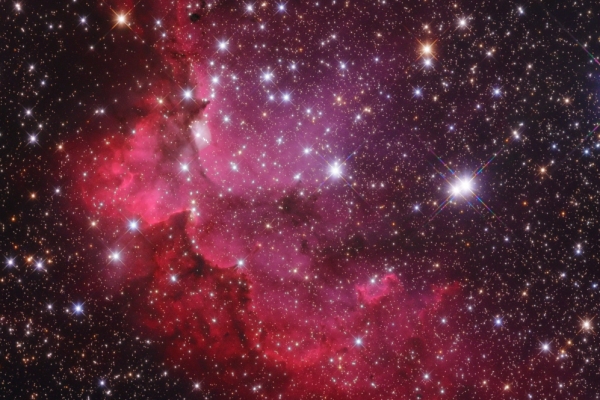In the heart of constallation Auriga
IC405, 410 and its surroundings

Technical data
| Instrument: | Canon EF 70-200mm f/2.8 USM L IS II |
| Camera: | Canon EOS 550D (modified) |
| Filter: | - |
| Mount: | SkyWatcher EQ-6 Pro |
| Guiding: | Lacerta M-Gen autoguider |
Image data
| Exposure time: | 5 hours, ISO1000 |
| Location, date: | Hungary, Izsákfa - 2013. January.11. |
| Transparency: | 7/10 |
| Seeing: | 6/10 |
| Temperature: | -2 °C |
| Processing: | CCDStack, Registar, Pixinsight LE, Photoshop |
Description
Rich in star clusters and nebulae, the ancient constellation of the Charioteer (Auriga) rides high in northern winter night skies. This deep telescopic view shows off some of Auriga's celestial bounty. The field includes emission region IC 405 (top) about 1,500 light-years distant. Also known as the Flaming Star Nebula, its red, convoluted clouds of glowing hydrogen gas are energized by hot O-type star AE Aurigae. IC 410 (center right) is significantly more distant, some 12,000 light-years away.
The star forming region is famous for its embedded young star cluster, NGC 1893, and tadpole-shaped clouds of dust and gas. IC 417 and NGC 1931 at the lower right, the Spider and the Fly, are also young star clusters embedded in natal clouds that lie far beyond IC 405. Star cluster NGC 1907 is near the bottom edge of the frame, just right of center. The crowded field of view looks along the plane of our Milky Way galaxy, near the direction of the galactic anticenter. Source: apod.nasa.gov
Technical data
| Instrument: | Canon EF 70-200mm f/2.8 USM L IS II |
| Camera: | Canon EOS 550D (modified) |
| Filter: | - |
| Mount: | SkyWatcher EQ-6 Pro |
| Guiding: | Lacerta M-Gen autoguider |
Image data
| Exposure time: | 5 hours, ISO1000 |
| Location, date: | Hungary, Izsákfa - 2013. January.11. |
| Transparency: | 7/10 |
| Seeing: | 6/10 |
| Temperature: | -2 °C |
| Processing: | CCDStack, Registar, Pixinsight LE, Photoshop |
Recommended photos

The Great Globular Cluster
The Great Globular Cluster is brighty shinning deep sky object in constellation Hercules.

The entrace of the sky's cave
This colorful skyscape features the dusty, reddish glow of Sharpless catalog emission region Sh2-155, the Cave Nebula.

The Wizard Nebula
The Wizard Nebula, NGC7380 is located in constellation Cepheus, which lies roughly 8000 light-years away. It is categorized with number 142 by Stewart Sharpless in 1958.


